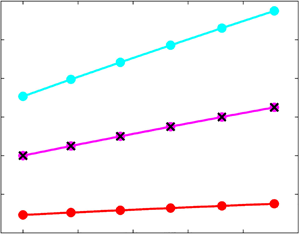Article contents
Integral relations for the skin-friction coefficient of canonical flows
Published online by Cambridge University Press: 20 June 2022
Abstract

We show that the Fukagata et al.'s (Phys. Fluids, vol. 14, no. 11, 2002, pp. 73–76) identity for free-stream boundary layers simplifies to the von Kármán momentum integral equation relating the skin-friction coefficient and the momentum thickness when the upper bound in the integrals used to obtain the identity is taken to be asymptotically large. If a finite upper bound is used, the terms of the identity depend spuriously on the bound itself. Differently from channel and pipe flows, the impact of the Reynolds stresses on the wall-shear stress cannot be quantified in the case of free-stream boundary layers because the Reynolds stresses disappear from the identity. The infinite number of alternative identities obtained by performing additional integrations on the streamwise momentum equation also all simplify to the von Kármán equation. Analogous identities are found for channel flows, where the relative influence of the physical terms on the wall-shear stress depends on the number of successive integrations, demonstrating that the laminar and turbulent contributions to the skin-friction coefficient are only distinguished in the original identity discovered by Fukagata et al. (Phys. Fluids, vol. 14, no. 11, 2002, pp. 73–76). In the limit of large number of integrations, these identities degenerate to the definition of skin-friction coefficient and a novel twofold-integration identity is found for channel and pipe flows. In addition, we decompose the skin-friction coefficient uniquely as the sum of the change of integral thicknesses with the streamwise direction, following the study of Renard & Deck (J. Fluid Mech., vol. 790, 2016, pp. 339–367). We utilize an energy thickness and an inertia thickness, which is composed of a thickness related to the mean-flow wall-normal convection and a thickness linked to the streamwise inhomogeneity of the mean streamwise velocity. The contributions of the different terms of the streamwise momentum equation to the friction drag are thus quantified by these integral thicknesses.
JFM classification
Information
- Type
- JFM Papers
- Information
- Copyright
- © The Author(s), 2022. Published by Cambridge University Press
References
REFERENCES
- 14
- Cited by


